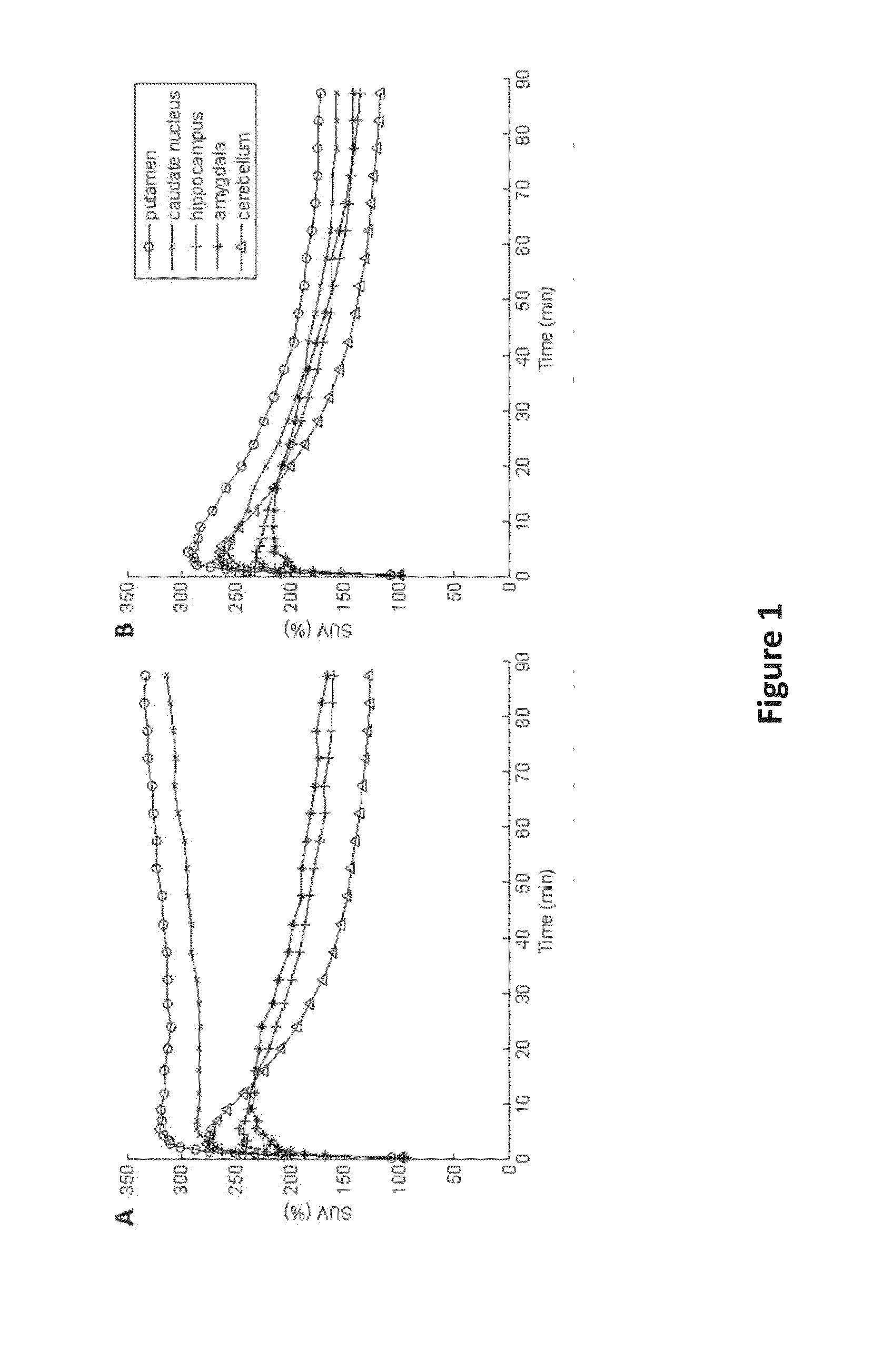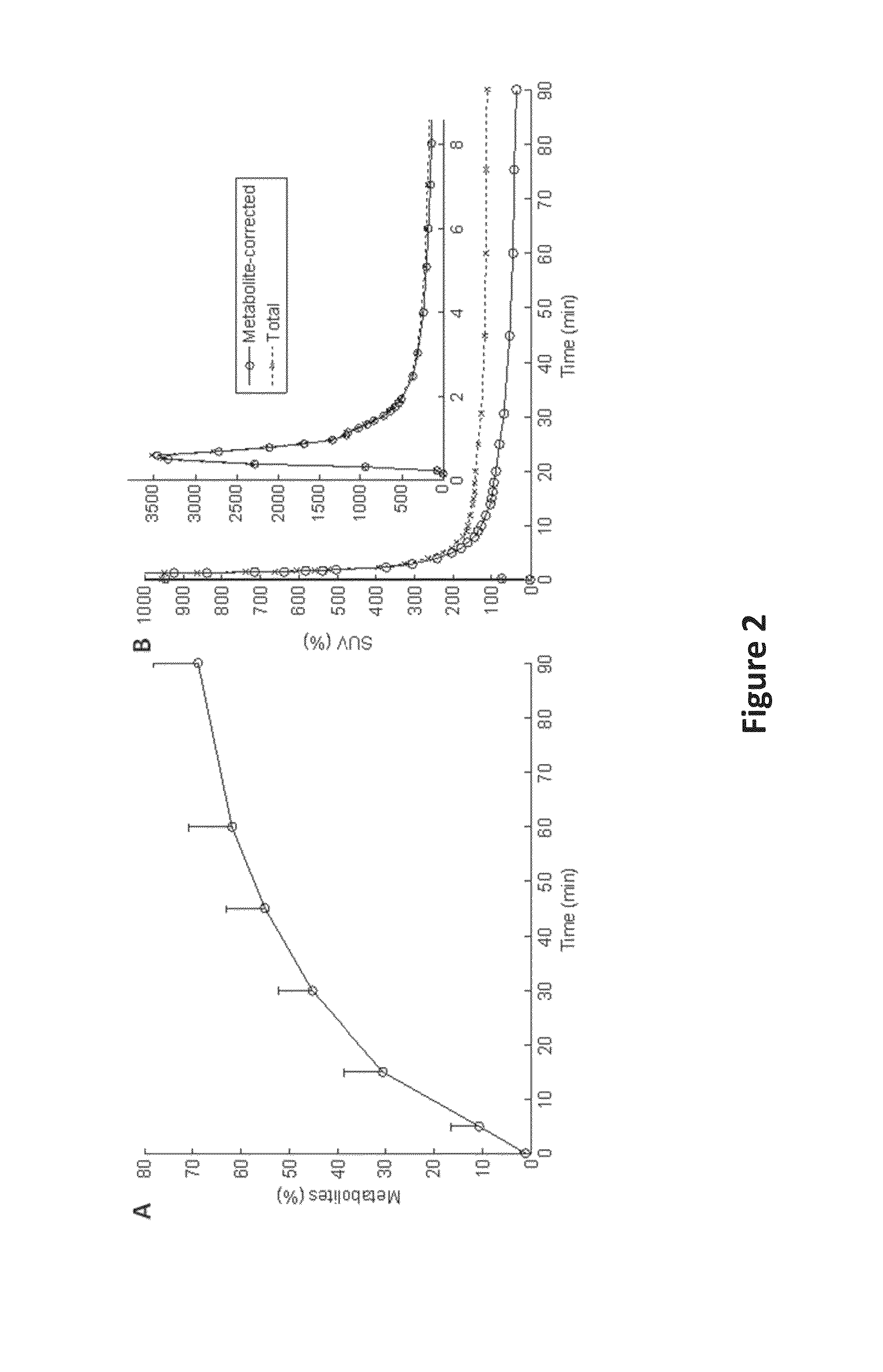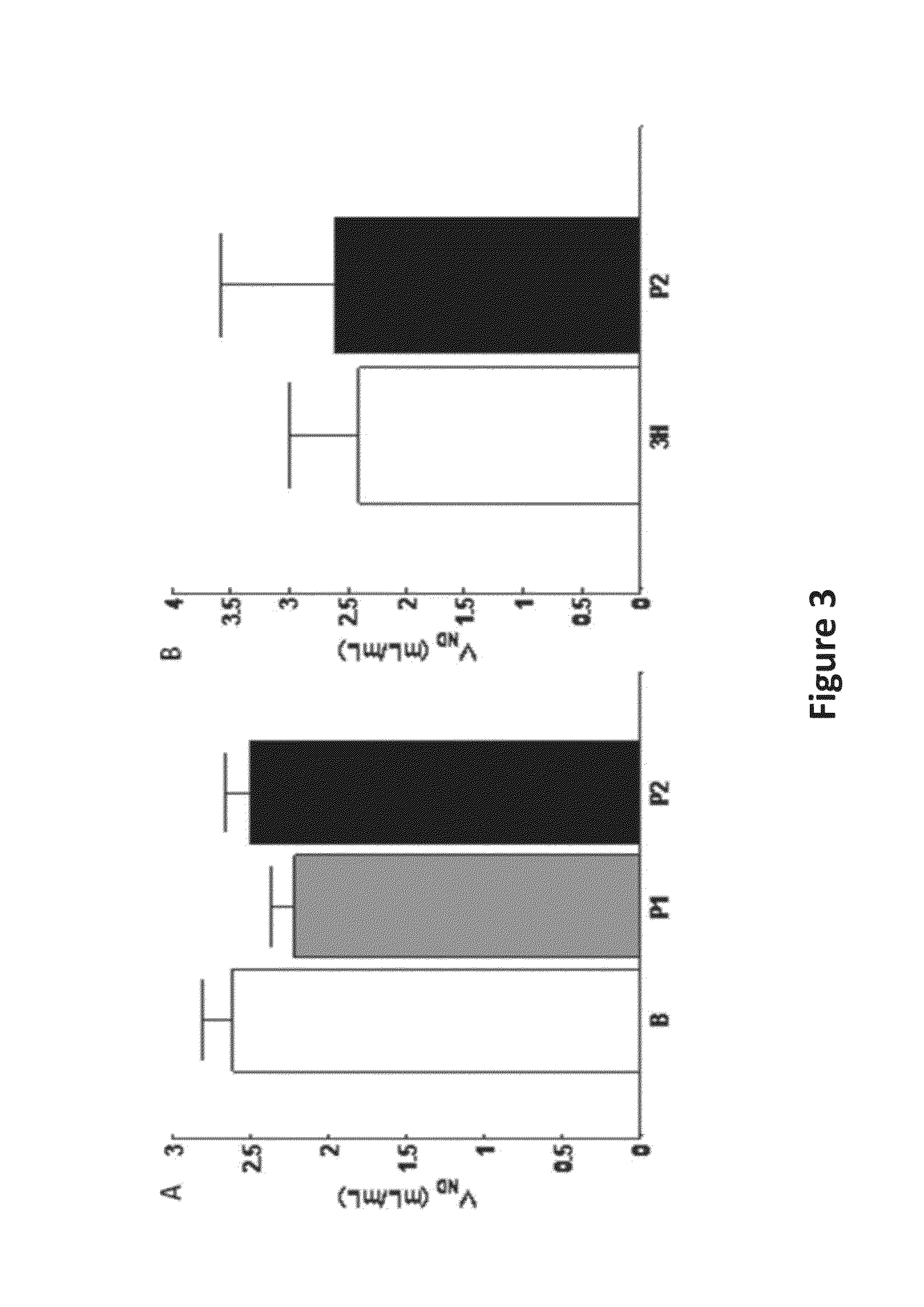Methods of treating alzheimer's disease and pharmaceutical compositions thereof
a technology of alzheimer's disease and pharmaceutical compositions, applied in the field of methods of treating alzheimer's disease, can solve the problems of not being effective in many patients, no treatment to cure ad or prevent or stop disease progression, and acetylcholinesterase inhibitors do not help everyone who has alzheimer's disease, so as to improve or augment the effect of acetylcholinesterase inhibitors, improve or augment, and mild cognitive impairmen
- Summary
- Abstract
- Description
- Claims
- Application Information
AI Technical Summary
Benefits of technology
Problems solved by technology
Method used
Image
Examples
example 1
Preparation of [11C]LuPET
[0110]The precursor is 3-phenylsulfonyl-8-(piperazin-1-yl)quinoline (C19H19N3O2S; MW: 353.4) and is known and publically disclosed compound. The precursor was dissolved in acetonitrile and transferred to a BioScan Autoloop System and reacted with [11C]-Iodomethane prepared as follows. 11CO2 prepared from bombardment of high purity nitrogen gas containing 0.5 to 1.0% oxygen with accelerated protons was reacted with hydrogen on a molecular sieve:nickel catalyst column at 380° C. to produce 11CH4, which was reacted with iodine vapor heated to 740° C. to form 11CH3I. [11C]-Iodomethane was swept through a furnace containing silver triflate to convert the radiolabeled iodomethane to [11C]-methyl triflate. [11C]-methyl triflate was swept into the loop methylation system using helium gas at a flow rate of about 20 mL / min at ambient temperature. The accumulation of [11C]-radioactivity in the loop was monitored with a local radiation monitor until the radioactivity re...
example 2
Positron Emission Topography Experiments (Parts A and B)
[0111]As the radioligand has not previously been dosed to humans it was initially evaluated in the human brain to identify an optimal method for quantification and validate the radioligand as a PET tracer (Part A). The primary objective of this study was to assess occupancy of the 5-HT6 receptors after multiple oral doses of Compound I in healthy subjects using PET with [11C]LuPET as the radioligand (Part B).
Subjects
[0112]Eight healthy male subjects (Age: 30.6±7.7 years; range: 22-44 years) participated in Part A, and sixteen healthy male subjects (Age: 32.3±7.6 years; range: 21-44 years) participated in Part B of this study.
PET Experiments
[0113]PET studies were performed on the GE Advance Tomograph (GE Medical Systems, Waukesha, Wis., USA). Subjects had one venous catheter for the radioligand injection, and one arterial catheter to obtain arterial blood samples for the determination of radioactivity in plasma. Then, subjects w...
example 3
Population Pharmacokinetics Modeling & PK / PD Model 5-HT6 Occupancy Simulation
[0155]Using the data generated from the PET study of example 2, an objective of the modeling and simulation exercise was to estimate the 5-HT6 receptor occupancies after multiple administrations of Compound I at once daily dosages in the range of 5.0-30 mg in an Alzheimer's population accordingly to age.
Population Pharmacokinetics (popPK) Model
[0156]Data from a Phase I study in elderly and data from the AD study (study 12936A) have shown that the clearance of Compound I is reduced in the elderly and hence elderly subjects having higher plasma concentrations compared to younger subjects for the same dose. This age effect has been incorporated in the PopPK model. In total, the dataset used in the popPK model consisted of 265 patients. The doses administered, single or multiple, were in the range of 9.0-300 mg.
PK / PD Model 5-HT6 Occupancy
[0157]12 healthy subjects were included in the assessment of 5-HT6 occupan...
PUM
 Login to View More
Login to View More Abstract
Description
Claims
Application Information
 Login to View More
Login to View More - R&D Engineer
- R&D Manager
- IP Professional
- Industry Leading Data Capabilities
- Powerful AI technology
- Patent DNA Extraction
Browse by: Latest US Patents, China's latest patents, Technical Efficacy Thesaurus, Application Domain, Technology Topic, Popular Technical Reports.
© 2024 PatSnap. All rights reserved.Legal|Privacy policy|Modern Slavery Act Transparency Statement|Sitemap|About US| Contact US: help@patsnap.com










